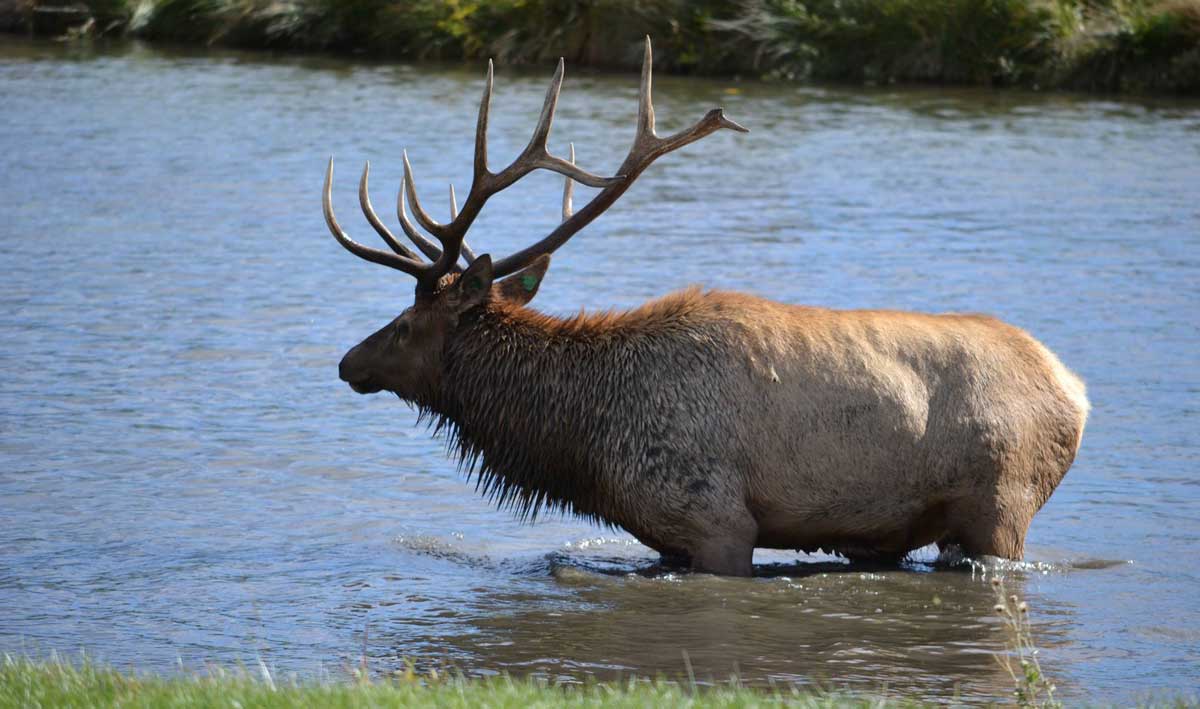All cervids are excellent swimmers. Hollow hair and rich fat help make elk buoyant and insulate them from the danger of hypothermia in frigid waters.
Yearly migration routes—particularly in mountainous areas—often require elk to cross creeks and rivers swollen from spring run-off. Calves only a few days old can navigate substantial rivers but may require days of coaxing before they’ll take the plunge. Reintroduced elk on Afognak Island in Alaska have been known to swim three miles to nearby Kodiak Island.
While being pursued by wolves, elk may retreat into waterways that largely protect them from predation. Native Americans, such as the Salish of Puget Sound, long took advantage of this tendency, driving elk into the sea with dogs and fire before clubbing them from canoes.
An elk’s natural endurance—from generations of fleeing predators in open country—allows it to power through long distances or rough waters. Of course, sometimes elk simply take a refreshing dip to cool off in the summer.
Photo c/o Faith Marlin
Elk NetworkAre Elk Good Swimmers?
Conservation | March 30, 2018

Latest Content
Washington Wolf Population Grows by 20 Percent
Below is a news release from the Washington Department of Fish and Wildlife. Washington’s wolf population grew for the 15th consecutive year in 2023, according [...]
RMEF, Partners to Enhance Idaho Elk Habitat
Below is a news release from the Nez Perce-Clearwater National Forests. The Nez Perce-Clearwater National Forests, the Idaho Department of Fish and Game, and the [...]
RMEF Supports Invasive Plant Treatments in Oregon
Below is a news release from the Malheur National Forest. The Malheur National Forest will soon begin invasive plant control on the forest, with work [...]